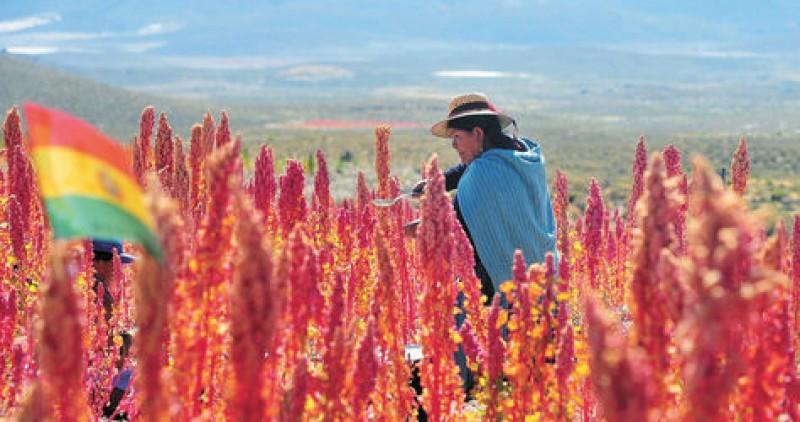RIO DE JANEIRO, BRAZIL – Bolivian authorities inaugurated the day before (Wednesday) a plant to industrialize the quinoa produced in the country, which required an investment equivalent to some US$7.9 million.
The industry was located in an area of 8,800 square meters in the municipality of Soracachi, in the Andean region of Oruro, one of the three quinoa producers in Bolivia.
Read also: Check out our coverage on Bolivia
Bolivian President Luis Arce inaugurated the plant with the goal of making it the first step towards “the full industrialization of quinoa.”

The plant will produce foodstuffs such as quinoa flakes and flour, but the president also wants to take advantage of the saponin, a component with cleaning qualities contained in the grain, to make detergents.
“We have to produce products with greater added value because look at what has happened, from Bolivia we have promoted to the whole world the consumption of quinoa and we are the country that has benefited the least,” lamented Arce.
The ruler assured quinoa producers that the Executive will be responsible for promoting quinoa and its derivatives in the local market and also abroad.
In turn, the general manager of the state-owned Empresa Boliviana de Alimentos y Derivados (EBA), Javier Freire, pointed out that this industry is the nineteenth industrial plant inaugurated by this entity, which is “a source of pride” because it is a plant “that has state-of-the-art technology” to produce “quality products”.
According to Freire, Bolivia annually produces more than 61,000 tons of quinoa, of which 34,000 are exported, some 17,000 are consumed in the domestic market and there is a surplus of 10,000 “that do not have a secure market”.
“The small producers are economically affected by illegal purchases” of this surplus quinoa “made by neighboring countries in the context of smuggling,” warned the official.
Now that surplus will feed the plant, which has a combination of technologies for optimal and environmentally friendly processes for dehulling and washing quinoa, he said.
The industry has the capacity to process 7,300 tons of grain into pearled quinoa, another 600 tons to produce quinoa flakes and the same amount to transform it into unsulfured quinoa and 400 tons more to produce flour, Freire said.
It will also benefit some 9,000 quinoa-producing families and will generate 156 direct jobs and around 780 indirect jobs, according to EBA’s manager.
Freire said that the plant is part of an “integral project” that includes Oruro, La Paz and Potosí, the three producing departments, and announced that in March quinoa storage centers will be inaugurated in these regions, with a capacity of 1,000 tons each.

